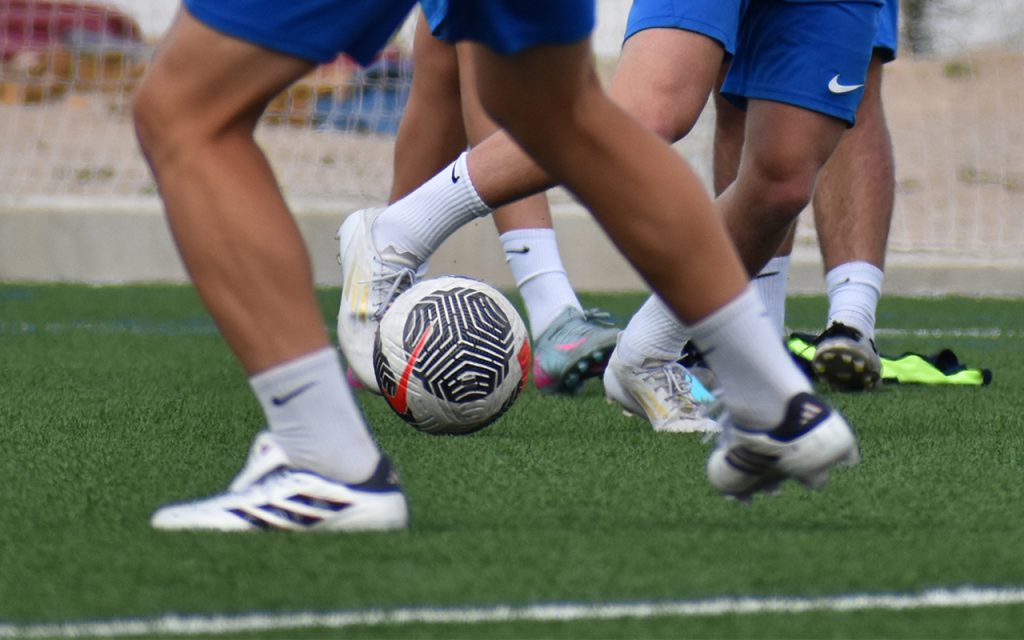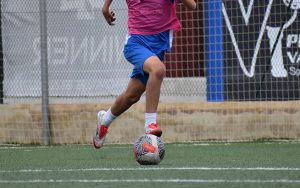Understanding the false nine role is key if you want to grasp how modern soccer tactics have evolved. Unlike the classic striker who stays high, battles center-backs, and finishes chances in the box, the false nine moves away from the front line—creating chaos and opportunity through space and unpredictability.
This role has grown in popularity as tactical systems demand smarter movement, sharper link-up play, and constant shape-shifting. That’s why you’ll often see this role taught in high-level technical settings like top football schools, where players learn positional flexibility and advanced attacking strategies.
Let’s break down what the false nine actually does, how it differs from traditional forwards, and how to master the position if you want to play like the best.
Table of Contents
- What Exactly Is a False Nine?
- Famous False Nines in Football History ⚽👑
- How Does a False Nine Affect Team Tactics?
- False Nine vs Traditional Striker: What’s the Difference?
- What Skills Do You Need to Play as a False Nine?
- How to Train for the False Nine Role
- When Is the False Nine Most Effective?
- The Brain Behind the Attack
What Exactly Is a False Nine?
The false nine (also written as “false 9”) is a center forward who drops deep into midfield instead of staying high near the opposition’s goal.
Instead of playing with their back to goal waiting for service, the false nine:
- Drops into pockets of space between midfield and defense
- Pulls defenders out of position
- Links up play with midfielders and wingers
- Creates space for others to exploit
This movement confuses center-backs: follow the false nine and leave space behind, or hold the line and risk them turning and creating.
Famous False Nines in Football History ⚽👑
Some of the world’s top players have mastered this role:
- Lionel Messi (Barcelona under Guardiola) – perhaps the most iconic false nine example.
- Francesco Totti (AS Roma) – a visionary forward who blurred positional lines.
- Cesc Fàbregas (Spain Euro 2012) – used in the role during a striker-less system.
- Roberto Firmino (Liverpool) – known for his pressing, link-up, and deep positioning.
These players didn’t just score—they dictated the attack.
How Does a False Nine Affect Team Tactics?
Having a false nine changes how the entire team plays. It’s not just one player moving—it’s a chain reaction across the pitch.
🔁 Creates space: When the striker drops, center-backs may follow, leaving space in behind for wingers or attacking midfielders.
🎯 Overloads midfield: Adds an extra man in central areas, helping with possession and pressing.
🎭 Disguises movement: Allows for rotations and fluid positioning, which keeps defenses guessing.
🚫 Disrupts defensive shape: Forces opponents to make quick decisions on marking and tracking runners.
In the right system, it’s a nightmare to defend.
False Nine vs Traditional Striker: What’s the Difference?
| Attribute | False Nine | Traditional Striker |
|---|---|---|
| Positioning | Drops into midfield | Stays high near defenders |
| Role in build-up | Key link-up player | Often final link in the chain |
| Movement | Horizontal and vertical drift | Forward runs, mostly vertical |
| Goal scoring focus | Shares and creates | Main goal-scorer |
| Defensive role | Helps press in midfield | Presses back line |
The false nine thinks like a midfielder, moves like a playmaker, and finishes like a forward.
What Skills Do You Need to Play as a False Nine?
Playing as a false nine requires intelligence and versatility. This is not a role for someone who only stands in the box.
🧠 Game IQ – Know when to drop, when to stay, and when to release
👟 First touch and vision – Ability to play under pressure and link with teammates
🌀 Spatial awareness – Constantly finding and creating space
🎯 Passing range – Must switch play, combine, and assist
💨 Sharp turns and mobility – Quick movement off the ball and between lines
You need to think fast and read defenders, not just beat them.
How to Train for the False Nine Role
To play the role well, your training must go beyond finishing drills.
🔄 1. Movement Patterns
- Practice dropping into space then turning to face the game
- Combine with midfielders in tight areas
- Rehearse runs after releasing the ball
⚙️ 2. Position Rotation
- Swap positions with attacking mids during buildup
- Train overlaps and underlaps with wingers
🧠 3. Decision-Making Drills
- Time-sensitive rondos with added pressure
- Scanning drills to improve awareness before receiving
🎯 4. Finishing from Deeper Positions
- Practice shots from the top of the box
- Late runs into the box from second line
When Is the False Nine Most Effective?
This tactic doesn’t work in every situation. Coaches usually use it when:
✅ The opponent plays with a high defensive line
✅ You need control in midfield
✅ Your wingers are strong goal-scoring threats
✅ The game demands a fluid, positionally flexible attack
It’s less effective if defenders stay compact or mark zones instead of following players.
The Brain Behind the Attack
A great false nine isn’t just a clever striker—they’re the system’s thinker. They pull strings, unlock defenses, and connect everything from midfield to goal.
To play this role, you must be willing to work off the ball, take calculated risks, and think two steps ahead of the defenders chasing you. It’s a demanding but rewarding position, perfect for players who want to lead with intelligence, not just instinct.
Drop deep. Play smart. Change the game. ⚽🎭🔥




